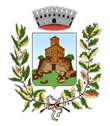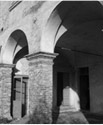
Projects for
recovery of the Rocca
The first 5 projects in the ranking:
The origins of Rocca di Nogarole (Nogarole Fortress) date back to around the 9th century and its name derives from the "Nogarolis" family of France that settled in Italy in the year 933.
The Rocca is a fortress of 60 x 80 meters and the area occupied has a geometric trapezoidal shape equal to approximately 4,924.50 square metres. It is located between the countryside in Verona and the Mantua territory. In the middle ages, this territory was characterised by the presence of various swamps that represented a natural obstacle against enemy attacks; in the few islands emerging from these swamps, populated towns were founded.
The defensive apparatus of the Rocca of Nogarole was formed, in addition to the surrounding walls, by two lines of moats: the first leaning against the walls and the second outer one used to defend the so-called Bastite (bastions).
In 1233, the surrounded castle was set to fire by the Guelphs of Mantua, but around the years 1240 - 1243, the complex was rebuilt by Henry from Egna. In 1345, Mastino II della Scala started building the Seraglio (fortified screen to defend the territory of Verona, starting from Valeggio sul Mincio up to Nogarole Rocca).
The Castle and surrounding lands were subsequently sold in 1544 by the enchantment of Rialto to Leonardo Boldù for 520 ducats, with the agreement to eliminate all the defensive structures of the Rocca. The same year, the noble Boldù sold it to Count Giovanni Bevilacqua-Lazise who, not long after, left it to his brother. In 1879 Mr. Benedetto Barbieri bought the Rocca and his descendants remained in possession of the structure until 1971 — until the passing of the last representative of this family, Miss Maria Barbieri, and was then donated to the Administration of the Province of Verona, which established a special "Barbieri Foundation" to manage the donation.
Today, the complex is divided into large bodies. The powerful farm house body (Manor House), built on four levels, consists of 30 rooms, almost all have vaulted ceilings on the ground floor, and simple vaults on the main floor. The most interesting and ancient core is the one located on the ground floor and consists of a set of nine rooms and an arcade that gives access to the Court. The groin, umbrella and lunette vaults represent a significant historical and architectural value that characterise the ceilings throughout this part. A small rectangular oratory with segmental arch vaults located on the north-east side is also part of this residential complex. Outside the oratory, in front of the threshold of the front door, lies a marble ledge on which a Latin inscription is engraved; on the same surface, moreover, two small ovals are depicted which represent the coats of arms of the noble family Bevilacqua-Lazise
The first 5 projects in the ranking:

INVEST IN THE RECOVERY OF THE ROCCA
Do you want to invest in the recovery of the Rocca with one of the submitted projects or with a different project?
Contacts: urp.nogarolerocca@legalmail.it / +39 045 7925384